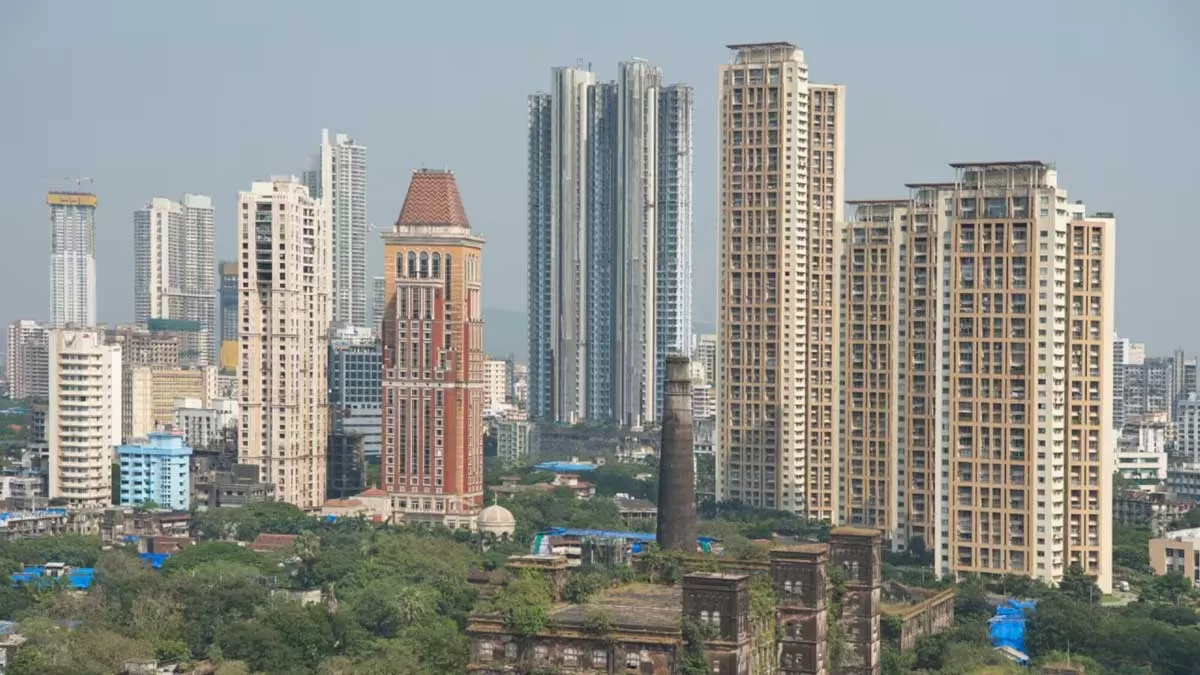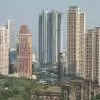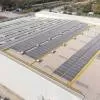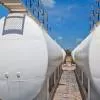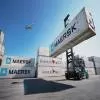Nitin Kulkarni, President, Sales and Marketing, Finolex Industries, is a sales and marketing veteran with a sound understanding of customer psyche. He joined Finolex Industries after spending a quarter of a century with Nerolac Paints and Hindware. He is now focused on leading the pipe major’s pan-India 250+ sales team. In the past four years, Kulkarni has significantly contributed to the company’s 12.45% CAGR increase in sales. During the lockdown, Finolex Industries onboarded a supply chain and procurement professional with experience across industries, especially in optimising global supply chains. Pradeep Shastry Vedula, President, Supply Chain, Finolex Industries, who has formerly worked with Asian Paints and Accenture, joined the pipe giant to help spur its next phase of expansion. In conversation with CW’s Senior Correspondent Charu Bahri, Kulkarni and Vedula discuss the sales and supply chain challenges that hit the pipes industry last year, what’s sorted and what’s still a worry, and the best practices and strategies that have helped Finolex stay in action._________You ended Q3 FY21 on a good note. Your net profit at Rs 256 crore was over Rs 93 crore in the year-ago quarter. Your total income from operations increased 52.5% year on year (YoY) at Rs 1,067 crore, against Rs 699 crore in Q3FY20. What were the biggest reasons driving this demand? How much do housing and real estate versus infrastructure drive demand for your products? Was the demand spread across the country? If not, which regions saw the most increase in demand?NK: For any pipe company, demand generally peaks between the months of February-March and May-June. Over summer, we see a lot of demand for pipes, not only from the agricultural sector but also from housing. Unfortunately, in 2020, owing to the pandemic and lockdown, this demand was not serviced. So we could not sell our usual volumes over the first quarter. That was followed by the monsoon quarter. Usually, demand for pipes reduces with the onset of the monsoon. During the lockdown, a lot of migrant labour relocated, which squeezed demand. Demand eventually emerged after the lockdown was eased in the third quarter. People asked for the material and we could supply it; we saw comfortable growth compared to the previous two quarters. So, we showed degrowth during the first two quarters but now we are comfortable.Agriculture has the best share in our overall volumes and has made the highest contribution to our volumes, followed by housing and infrastructure. That said, the demand from the agri sector this past year was not as high as we had expected. We didn’t see much geographic variation in demand. Demand was good wherever we have a hold on the market. As soon as the lockdown was eased, we saw demand. With the exception of areas where the lockdown continued and restrictions continued, we saw uniform demand across India.PSV: Another key factor behind the really good Q3 results is the global hike in PVC resin prices. We are the only backward integrated PVC pipes manufacturer in the country. We make our own resin for internal consumption as well as sale. In Q3 FY 21, PVC resin prices were at record highs globally. That played a significant role in the quarter’s results. So alongside the demand peaks that we saw in Q3 for the pipes and fittings division, resin sales also had a significant impact on the results.Market reports expect the Indian PVC pipes market valued at $3,539.0 million in 2018 to grow to $5,209.4 million by 2027, at a CAGR of 4.5% during the forecast period 2019 to 2027. Do you agree with this prediction? Also, what are your expectations from government initiatives such as extending the tax holiday on housing, the higher impetus on the Jal Jeevan Mission, enhancement of agricultural credit and increased provision for a rural infra development fund? Which of these areas will have the most impact? What sort of PVC pipes is each area demanding?NK: We expect the market to grow at more than 4.5% CAGR; 4.5% seems an underestimation. And ongoing and proposed government initiatives will be a reason for this; these will give an impetus to demand for PVC pipes. PVC pipes are required for irrigation, real estate and infrastructure—and the Government has a budgetary allocation for all these sectors. This is helping to increase overall demand. Growth could even be 7-8% CAGR. However, predicting these things is difficult because when situations like Covid-19 happen, every prediction falls flat. It will certainly be better than 4.5% though.We are seeing works associated with Jal Jeevan start in states across the country that are increasing demand for pipes. The enhancement of agri credit and provision for rural infra development will also help increase demand. Overall, a large number of villages will be impacted by these initiatives. The Government has extended the tax holiday on housing which will increase demand in the non-agri sector. For housing, CPVC pipes are in great demand and showing higher growth than other options. Regular PVC pipes are in use for agri.PSV: PVC pipes for the agri sector should grow in sync with agricultural GDP growth in India. If you take a five-year outlook, the agri sector has been growing at 4-5%, and pipes usually do 1-1.5% higher than that. On the construction demand side, as a rough rule of thumb, the building materials industry grows at 1.5 times the overall national GDP growth. So if the GDP growth this year is expected to be between 9% and 13%, and in the long term it is expected to be 7%, pipes for the construction industry could grow at 9-10%. Hence, overall, it would be a surprise if the PVC pipes market grows at under 7-7.5%.The pandemic disrupted supply chains and increased commodity prices. How did this impact you? How did you overcome these challenges?PSV: The lockdown was announced across countries in a very brief span of time mostly towards the latter half of March. Not just business, life itself came to a standstill. I remember my conversations with a lot of supply chain colleagues across different industries back then. Nobody could anticipate the scale of the disruption, the pace or the longevity of it. As the pandemic raged across key global supply hubs, we saw lockdowns and tentative re-openings amid the scare of a second wave. All this meant an unprecedented supply chain challenge at an unimaginable scale.Prices shot up across commodities because supply was constrained and, more worryingly, the outlook was uncertain.Despite this upheaval, we believe two factors might have helped us tide through the situation relatively better than some other pipe manufacturers. First, we are the only backward integrated PVC manufacturer in the country so we don’t have to import our resin. But we do import the raw materials that are used to make PVC. PVC import supplies to Asia—owing to a variety of factors—got hit worse than corresponding raw material supplies. Second, we source the bulk of our critical raw materials through long-term contracts and have very little dependence on spot supplies. Hence, when the lockdown started easing, we could get priority in allocation from our long-term supply partners. Companies dependent on spot supplies went through a much tougher phase.After the lockdown, the demand rebound across regions was much faster and stronger than anticipated but the supply scale-up has not been at a similar pace, so that continues to hamper supply chains even after the markets opened up. Another major factor that continues to be a challenge is the current state of global shipping. Transit times and shipping costs doubled as the pandemic laid waste to the carefully calibrated route plans of ships and containers. So not only were supply chain costs higher, availability also became a severe constraint.Why are you seeing such extensive delays in supplies?PSV: You have the shipping vessel and then the containers loaded on the ship. They can be owned by the same or separate companies. Each ship and each container goes through a meticulously planned global route. When the lockdown hit, global shipping lines froze operations. Containers were frozen wherever they were present. When economies reopened, every region did not reopen simultaneously. Some places saw demand for shipping but containers were not available; some places had no demand to ship out but had plenty of containers. The situation got further complicated when China and Australia got into a trade war sort of situation and China banned or cut down on a lot of Australian imports. Australia-China is a major shipping route for resources. The trade stand-off meant a container pile-up at certain ports and starvation at others. Just when it seemed like things were recovering, we saw polar storms sweeping the US and many factories went into shutdown again. In the PVC industry, several US manufacturers declared force majeure.However, while supply has been hit, US demand has come back very strongly. So suddenly demand exists but production has taken a couple of steps back. Now, the US is looking to substitute that supply from other global sources, paying ridiculous sums of ocean freight. Thus, there is a major pull of containers towards US ports. As a result, we are seeing congestions at US ports that are delaying the turnaround of containers from there. This has worsened the situation on nearly all other supply routes, particularly so in Asia. We’re seeing a perfect storm; whatever could go wrong has gone wrong.In terms of major raw materials, what really saved us was that we had long-term contracts and, thankfully, most of our major cargo comes through bulk shipments, not containerised cargo. So the container situation for the majority of our most critical raw materials did not hit us. But people who would have been importing PVC resin would have been taking containerised cargo and would have been hit by this situation.Fortunately, some initiatives we had started just before the pandemic aimed at developing domestic raw material sources for our key raw materials. Some of those initiatives came online just before the pandemic struck. This also helped us manage our supplies a little better. However, there are still concerns on the horizon, not just for us but for global supply chains in the next coming quarters. Global shipping is not yet back to normal. The most optimistic outlook is that it will take at least three to six months to normalise. The pessimistic outlook involves a big second wave and subsequent lockdowns.What about raw material prices?PSV: Commodity prices are up too. Shipping fares have slightly reduced in the past month or so but availability is an issue. EDC is a key raw material for any PVC manufacturer. In December 2019, it cost $282 per tonne. Today, it is at $ 650 per tonne and the outlook suggests that the price may increase to $ 800 per tonne.You have manufacturing plants in Pune and Ratnagiri in Maharashtra and Masar in Gujarat, apart from your own PVC resin manufacturing facility in Ratnagiri, set up in technical collaboration with Uhde of Germany. At what capacity have these plants been working this year?PSV: Capacity took a dip during the lockdown but the demand bounce-back has been pretty strong. Right now, plants are running at pre-Covid capacity levels. Pipes being a part of essential agricultural activities, there was only a short period when we were fully shut down. July onwards, production has been at pre-Covid levels.


